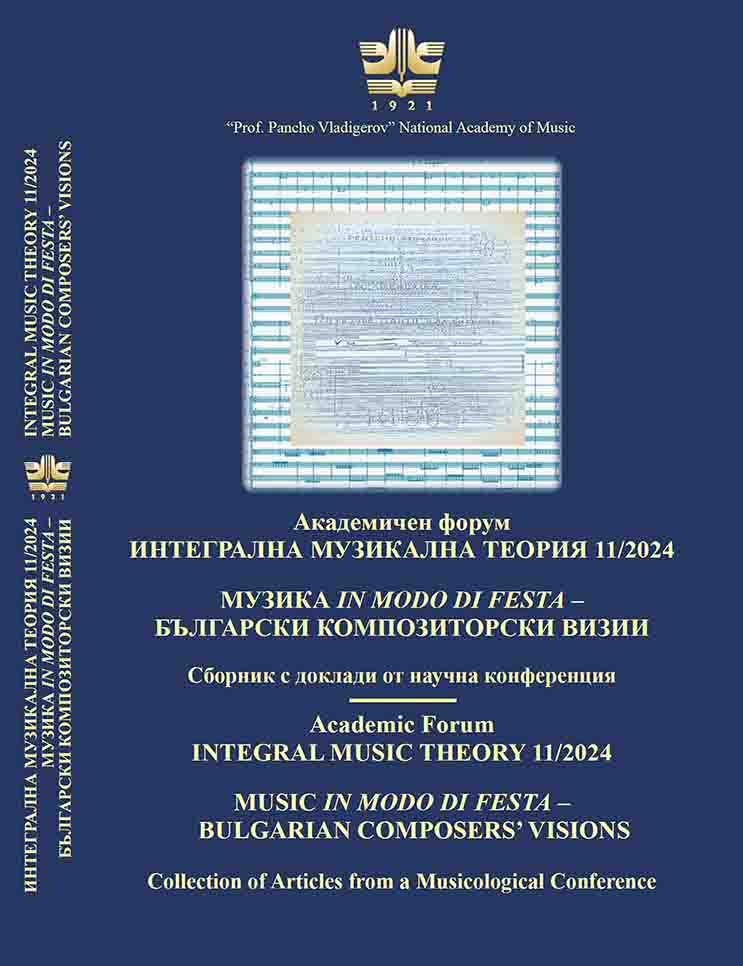Соната за цигулка и пиано (1945) от Константин Илиев в пресечната точка на академичната традиция и формиращия се индивидуален стил – от празника в творчеството към творчеството като празник
Sonata For Violin And Piano (1945) by Konstantin Iliev at the Crossing Point of the Academic Tradition and the Emerging Individual Style – from Celebration in Creativity to Creativity as Celebration
Author(s): Michaela KolevaSubject(s): Fine Arts / Performing Arts, Music
Published by: Издателство НМА „Проф. Панчо Владигеров”
Keywords: sonata; musical form; contrast; mixolydian; layers; dialogue; phonism
Summary/Abstract: This article examines Konstantin Iliev’s earlier approach to the genre of the duo sonata in his Sonata for Violin and Piano in B flat major. The work was written during his studies at the State Academy of Music and is built on the classical foundations of the genre established by the national (the violin and piano sonatas of Lyubomir Pipkov, Pancho Vladigerov, Dimitar Nenov and Parashkev Hadjiev) and European (the sonatas of Beethoven, Brahms, Grieg and Franck) ideal examples to which the young Iliev was directed by his teachers, Prof. Parashkev Hadjiev and Prof. Pancho Vladigerov. In this regard, there is a proposed generalized example of the form of the genre and the genre itself, which are accepted as a basis for recreation. Besides the stylistic influences of the authorities mentioned above, the sonata is also marked by the aesthetic “demands” of its time, which means the application of the national folklore melodic basis along with the predominance of the major modes and the mixolydian modal colouring, which aims to suggest an optimistic image or spirit on the foundation of genres related to dance. Subsequently, these characteristic features prove to be completely extraneous when it comes to Konstantin Iliev’s mature manner of composition. Nevertheless, the birth of the sonata proved to be a decisive moment in the composer’s path - as well as being a significant starting point that provides direction for the formation of one of the most sophisticated and intriguing compositional styles, which proved to be that of Konstantin Iliev in twentieth-century Bulgarian music, it is also an artistic justification for perceiving the musical work of art as a celebration of the creative spirit itself.
Journal: Academic Forum “Integral Music Theory”
- Issue Year: 11/2024
- Issue No: 1
- Page Range: 91-112
- Page Count: 22
- Language: Bulgarian

